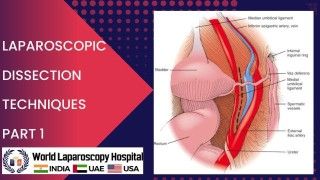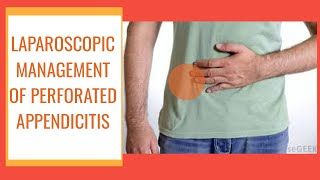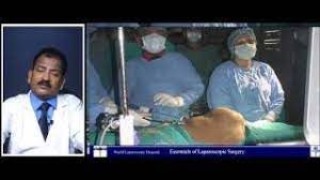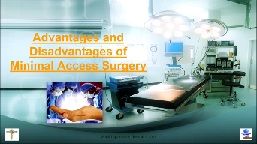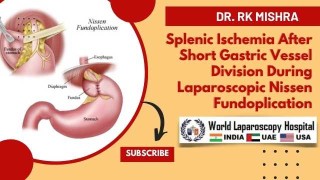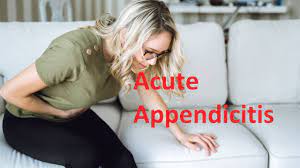Reflux Relief: Laparoscopic Fundoplication Unleashing Effective Treatment for GERD
Add to
Share
1,201 views
Report
2 years ago
Description
Introduction: Gastroesophageal reflux disease (GERD) affects millions of individuals worldwide, causing discomfort, pain, and a reduced quality of life. While medication and lifestyle modifications offer initial relief, some patients require surgical intervention to manage their symptoms effectively. Laparoscopic fundoplication has emerged as a highly effective and minimally invasive surgical procedure for treating GERD. This essay explores the significance of laparoscopic fundoplication in providing reflux relief, improving patient outcomes, and reshaping the treatment landscape for GERD. Body: Understanding GERD and its Impact: GERD is a chronic condition characterized by the backflow of stomach acid into the esophagus, causing symptoms such as heartburn, regurgitation, chest pain, and difficulty swallowing. The condition can significantly impact a person's quality of life, leading to chronic discomfort, interrupted sleep, and diminished overall well-being. While medications can alleviate symptoms, they may not provide long-term relief for all patients. Laparoscopic Fundoplication: A Minimally Invasive Solution: Laparoscopic fundoplication involves the surgical reinforcement of the lower esophageal sphincter (LES), the valve responsible for preventing acid reflux. In this procedure, a surgeon creates a new valve by wrapping a portion of the stomach around the esophagus, strengthening the LES and restoring its functionality. The laparoscopic approach utilizes small incisions, specialized instruments, and a camera, resulting in less pain, reduced scarring, and a faster recovery compared to traditional open surgeries. Effectiveness of Laparoscopic Fundoplication: Laparoscopic fundoplication has proven highly effective in providing long-term relief for patients with GERD. The procedure addresses the root cause of the condition by restoring the normal barrier between the stomach and the esophagus, reducing the frequency and severity of acid reflux episodes. Studies have shown that laparoscopic fundoplication significantly improves symptoms, reduces the need for medication, and enhances overall quality of life for patients suffering from GERD. Advantages of Laparoscopic Approach: The minimally invasive nature of laparoscopic fundoplication offers several advantages. The smaller incisions result in less post-operative pain, reduced blood loss, and shorter hospital stays compared to open surgery. Additionally, the improved visualization provided by the laparoscopic camera allows for precise placement of sutures during the procedure, enhancing surgical outcomes. Patients undergoing laparoscopic fundoplication experience a faster recovery, enabling them to return to their normal activities sooner. Evolving Techniques and Patient Selection: Advancements in laparoscopic surgical techniques have further refined the approach to fundoplication. Surgeons now have access to innovative tools and instruments, as well as refined operative strategies, allowing for individualized and tailored procedures based on patient needs. Patient selection is crucial in achieving successful outcomes, and careful evaluation by a multidisciplinary team ensures appropriate candidates for laparoscopic fundoplication. Laparoscopic fundoplication is a minimally invasive surgical procedure that offers effective treatment for gastroesophageal reflux disease (GERD). GERD is a chronic condition characterized by acid reflux, causing symptoms such as heartburn, regurgitation, and chest pain. Medications and lifestyle changes can provide initial relief, but for those who require more long-term solutions, laparoscopic fundoplication is a highly successful option. During laparoscopic fundoplication, the surgeon reinforces the lower esophageal sphincter, the valve responsible for preventing acid reflux. This is achieved by wrapping a portion of the stomach around the esophagus, strengthening the valve and restoring its function. The procedure is performed using small incisions, specialized instruments, and a laparoscopic camera, resulting in reduced pain, minimal scarring, and a faster recovery compared to traditional open surgeries. The effectiveness of laparoscopic fundoplication in treating GERD has been well-documented. Studies have shown that the procedure significantly improves symptoms, reduces the need for medication, and enhances overall quality of life for patients. The restoration of the normal barrier between the stomach and the esophagus reduces the frequency and severity of acid reflux episodes, providing long-term relief. One of the major advantages of laparoscopic fundoplication is its minimally invasive nature. The smaller incisions result in less post-operative pain, reduced blood loss, and shorter hospital stays. Patients also experience a faster recovery, allowing them to return to their normal activities sooner. Advancements in laparoscopic techniques and patient selection have further refined the approach, ensuring individualized and tailored procedures based on each patient's needs. Laparoscopic fundoplication has revolutionized the treatment of GERD, providing an effective and minimally invasive solution for reflux relief. With ongoing advancements and refined surgical techniques, this procedure continues to transform the management of GERD, improving the quality of life for those affected by this chronic condition. Conclusion: Laparoscopic fundoplication has emerged as a game-changer in the management of GERD, offering effective and long-lasting relief for patients who have not achieved satisfactory results with medications alone. This minimally invasive surgical technique provides reflux relief, improves symptoms, and enhances overall quality of life for individuals suffering from GERD. With ongoing advancements and refined surgical techniques, laparoscopic fundoplication continues to transform the treatment landscape for GERD, providing a highly effective and minimally invasive solution to restore comfort and well-being in those affected by this chronic condition.
Similar Videos

